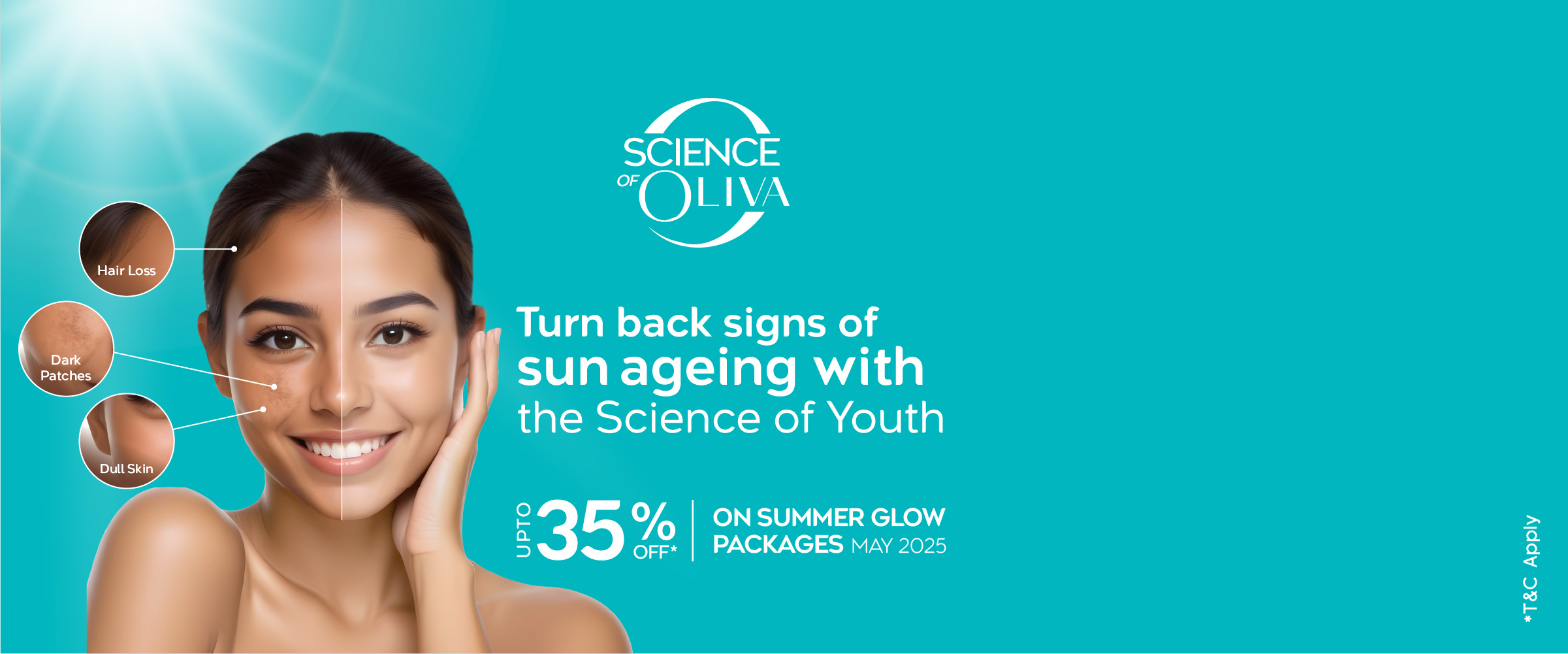Highlights
- ● Skin tanning is a natural process where the skin darkens in colour because of the exposure to ultraviolet light.
- ● Due to the resulting increase in melanin production, oxidation of melanin or rise in the number of melanocytes, the complexion may continue to darken.
- ● Suntanned skin is most prominent on the forehead, temples, and outer aspects of the arms.
- ● Sunscreen is the best defence against the harmful ultraviolet rays of the sun.
- ● Any individual is prone to skin tanning, but factors such as ethnicity, age, outdoor activity, the pattern of clothing and skin type determine the extent of it.
- ● Anyone under the age of 5 and over 50 years can develop skin tanning due to UV ray exposure.
What Is Tanned Skin?
Tanned skin is skin that has darkened due to excess sun exposure, especially UV rays. It is a result of an increase in the melanin content of the skin, which is the body’s natural protective measure triggered to minimise additional skin damage. Eumelanin is the specific type of melanin that tans the skin with a brown colour.
Tanning is mostly visible on uncovered parts of the body such as the face, arms, hands, legs, feet, back and neck.
Causes Of Tanned Skin
The leading causes of skin tanning are:
- UV-A Exposure: UV-A rays are dangerous because they are capable of penetrating the deeper skin layers, causing cellular damage.
-
- UV-A exposure occurs all year round, as it can pass through the ozone layer in the atmosphere.
- The increase in the production of the melanin pigment released from the melanocytes into keratinocytes is responsible for the browned, darkened colour of the skin.
- UV-A rays break down the natural collagen reserve in the skin, which results in premature ageing.
- Chronic exposure to UV-A rays also results in DNA damage, which is a leading cause of skin cancer.
- UV-B Exposure: UV-B light is harmful because it can burn the upper skin layers.
- UV-B exposure surges during the summer and decreases during winter months.
- The Earth’s ozone layer can block a majority of UV-B rays. However, 5-10% of UV-B rays can penetrate.
- Exposure to UV-B rays prompts the DNA damage that induces an increase in melanin production.
- Overexposure to UV-B rays is likely to cause sunburns, moles, skin ageing, skin tanning and some types of skin cancer.
- UV-B rays are also responsible for the production of Vitamin D in the skin.
- Artificial Tanning Equipment: Use of tanning lamps can also result in pigmented skin.
Informative Resources:
Types & Classification:
Accurate classification of your skin type can provide an estimate of the extent of tanning that your skin may experience.
- If you have Skin Type I, you have pale white skin that may never tan.
- If you have Skin Type II, you have a white to light beige complexion that may tan minimally.
- If you have Skin Type III, you have a beige skin tone that may gradually tan to a light-brown colour.
- If you have Skin Type IV, you have light brown skin, which may tan to a dark brown colour.
- If you have Skin Type V, you have a moderately brown complexion, which may tan to a more profuse brown colour.
- If you have Skin Type VI, you have a dark brown or black complexion that may tan generously.
Diagnosis:
A dermatologist can assess and diagnose the severity of skin tan. During the consultation, you may have to undergo a physical examination as your doctor will try to understand the cause and extent of the tanning.
Are You at Risk?
Everyone can get skin tan. However, individuals who are most at risk include:
- Children below the age of 5 years and mature adults over 50 years have a reduced thickness of skin that is usually more sensitive to harmful ultraviolet radiation.
Individuals with immune deficiencies and chronic conditions are more vulnerable to the side effects of UV exposure.
Prevention and Management:
Dermatologists recommend the following tips to prevent skin tanning:
- Use a sunscreen which is labelled to protect against UV-A and UV-B rays throughout the year. The SPF factor in the sunscreen lotion should be a minimum of 30 for most skin types. Some individuals may need SPF 50 depending on their skin type. A dermatologist-prescribed sunscreen is ideal for use.
- Avoid sun exposure, when the sunrays are harshest, especially between 10 am and 4 pm.
- Cover your head with a hat or a scarf and wear sunglasses to protect your eyes.
- Wear protective clothing. Dark, tightly woven or knitted fabric clothing is better to prevent skin damage due to sun exposure.
Self-care:
Several home remedies are available to treat tanned skin. Though they are popular recourses, one does best to avoid them as far as possible. While they may offer temporary relief, it is advisable to seek medical assistance before advancing with self-care measures.
Treatment Options
If you are hoping to treat suntanned skin effectively, then look no further than Oliva Skin & Hair Clinic. Types of anti-tan treatments available here include:
- Chemical Peels
- Laser Toning Treatments
- Topical and Oral Medications
The experienced and trained dermatologists at Oliva Clinic can chalk out a custom-designed treatment plan for you. They can also guide you on post-treatment care to ensure you get optimal results and long-lasting satisfaction. Reach out today.
Prognosis:
Your dermatologist will work with you every step of the way to improve your skin tone post tanning. Call to book an appointment with an experienced dermatologist at Oliva Hair & Skin Clinic because protecting your skin is essential.
Delivering World-class dermatology solutions is our mission! Redefining the quality of care is a passion!
How to get started?  Book Appointment or 📞82978 82978 to enjoy the best results!
Book Appointment or 📞82978 82978 to enjoy the best results!









